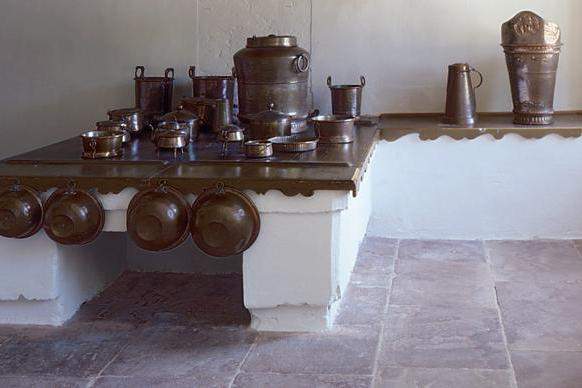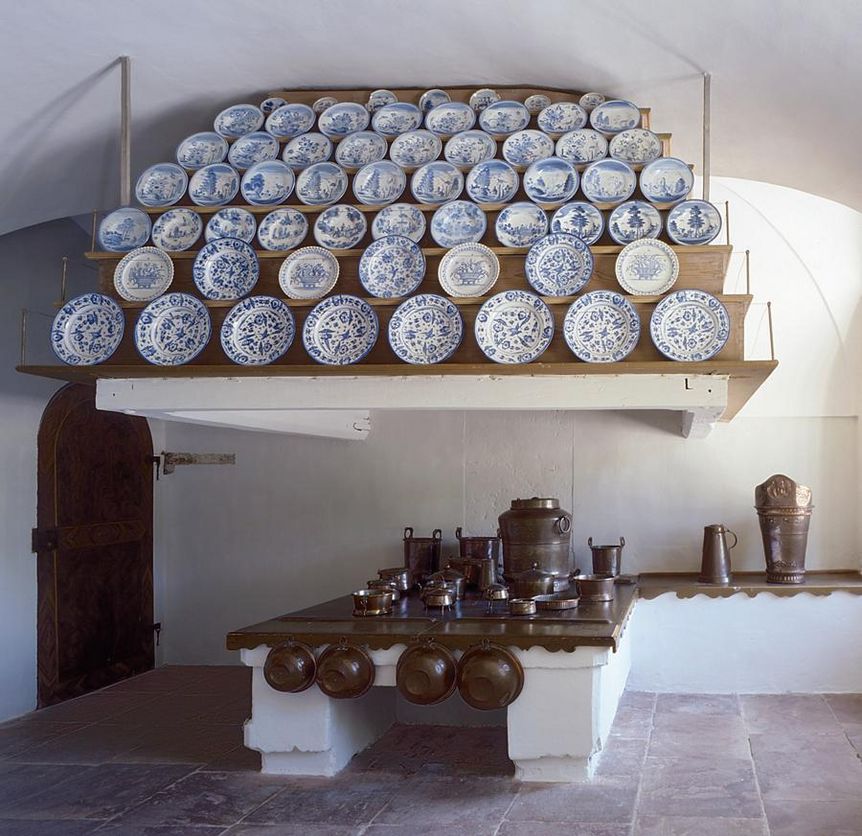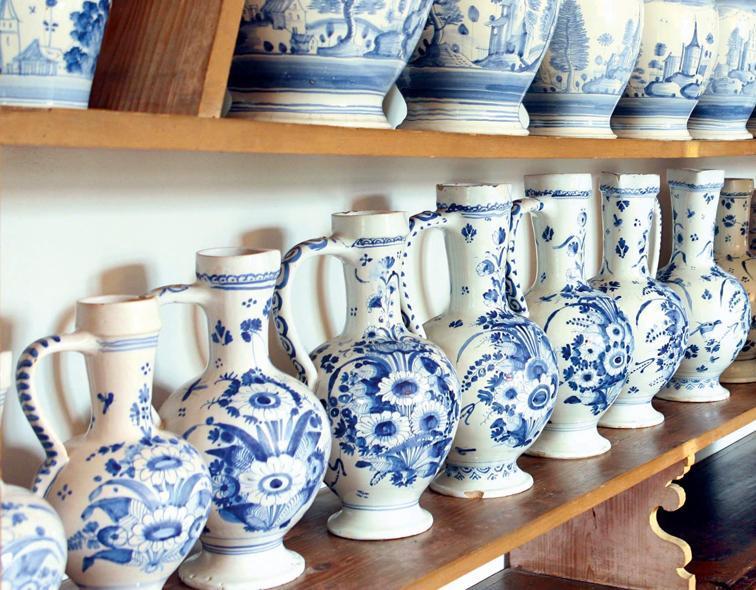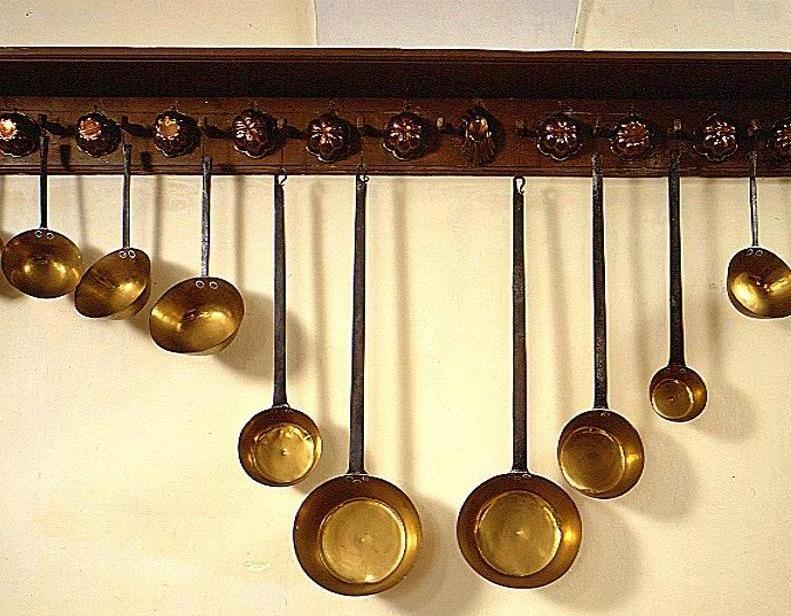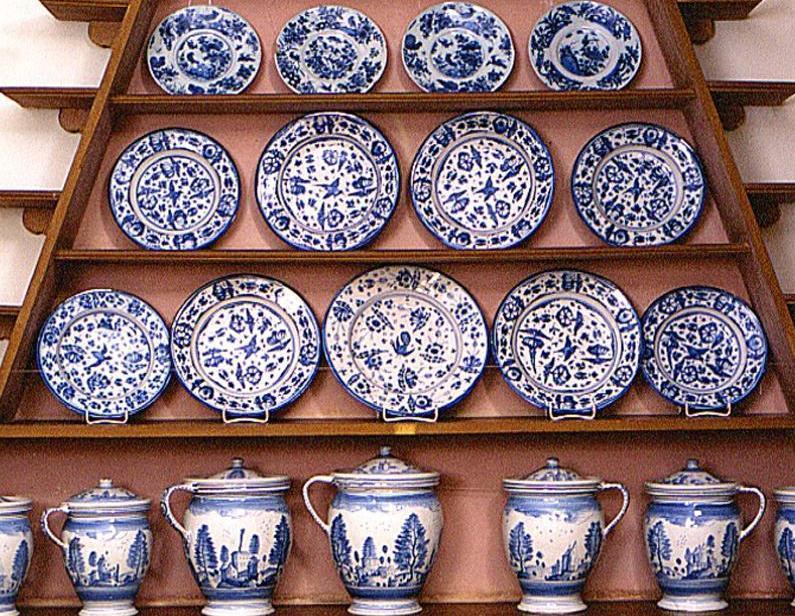Symbol of a good housewife
Steaming pots, fire and soot never touched this place. No cooking took place in the open kitchen; rather, the lady of the house's possessions were proudly displayed. Around 1700, there was no great differentiation between an open kitchen, a porcelain kitchen, or a porcelain cabinet. All three rooms served to display valuable porcelain and tableware. The open kitchen developed in Holland and was adopted by Protestant sovereigns as a representational room. At the Favorite Palace, the open kitchen was considered part of the princess's apartment, as it is today, while the true kitchen was located below her son's apartment.



